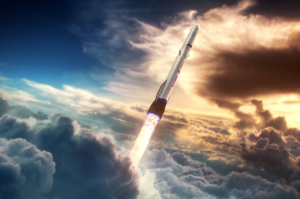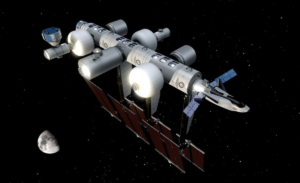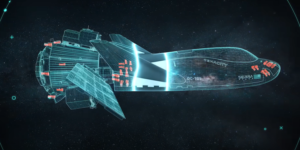
Sierra Space Is Working On A Second Dream Chaser!
For the past few months now Tenacity, or DC-101, a new commercial spaceplane has been undergoing testing at NASA’s facility in preparation for its first-ever launch. This same vehicle has been going through production and various testing for years now in preparation for its maiden flight.
However, this isn’t the only Dream Chaser vehicle being actively worked on. Just recently the company shared more information on a second spaceplane under construction that will add to the Dream Chaser fleet. This comes in addition to new tests being completed and a launch only months away. Here I will go more in-depth into the recent test milestone, a second Dream Chaser, what to expect in the coming weeks, and more.
Another Dream Chaser

When Dream Chaser finally does launch for the first time, the plan is to ramp up launch cadence quite significantly. Even though the idea is to continually reuse Tenacity, Sierra Space wants more vehicles ready and available. This allows them to make upgrades, account for refurbishment time, have a backup, etc. While information has been limited, we recently got an update on another Dream Chaser currently in production.
This month on the 11th, the company tweeted saying, “Dream Chaser, Reverence, is currently in production along with its Shooting Star cargo module at our Dream Factory in Colorado. This is the second spaceplane in our Dream Chaser fleet which will help carry cargo to the Space Station.” This included an image of the spaceplane in early production and practically just a frame of the Dream Chaser vehicle. You can also see the Shooting Star module in the background in a similar stage of production.
What’s interesting is that this isn’t the first time the company has hinted at additional vehicles. For example, all the way back in 2022, they tweeted “And then there were two…” with a picture of a second Dream Chaser. These look to be the same vehicles just a few years apart. However, even with that time, the newest image highlights that a lot of work is still left before it becomes an operational spaceplane. This helps put in perspective the amount of time it takes Sierra Space to build and test these vehicles.
To add to this evidence, back in 2018 a NASA OIG report on the vehicle gave some additional evidence on the company’s plans. It was quoted saying, “Sierra Nevada’s plan to build a single Dream Chaser spacecraft for CRS-2 missions is a single-point-of-failure that represents substantial technical and schedule risks for the ISS Program. During a visit to Sierra Nevada in June 2017, company officials told us they had no plans to build a second Dream Chaser. In August 2017, ISS Program officials said Sierra Nevada was considering building a second Dream Chaser to be completed by 2021, but no decision had been made as of October 2017. In the event of a failure, Sierra Nevada officials told us in June 2017 that a second spacecraft could be built from spare parts without additional costs to NASA” they said. Obviously, a lot has changed since this document was released mainly relating to timelines and delays, however, some of the same concerns and reasons for a second Dream Chaser are still true.
Tenacity is expected to provide a minimum of seven cargo missions to and from the space station carrying critical supplies like food, water, and science experiments. These contract obligations combined with the future goals of the company all support the creation of additional spaceplanes.
All this being said, the process of creating another spaceplane takes time. To put it in perspective, around 2016, Sierra Space began work on Tenacity. Now close to 8 years later, the vehicle is almost ready for its maiden flight. In theory, a second spaceplane should be much faster to build with the knowledge and experience gained while building Tenacity. However, it still will take years of time and impact how many vehicles are ready and by when. The company has also made it clear that there were many challenges during this spaceplane’s development, from figuring out how to increase payload capacities to revolutionizing launch procedures.
In a statement, they said, “Perhaps most notable was the unique hurdle of designing a spaceplane barrier that could easily be stowed and deployed, but that wouldn’t allow anything to escape the craft’s crew module. Sierra Space needed a surefire way to ensure no debris would strike the uncrewed spacecraft or get left behind in space.” Many designs were considered, from the most obscure mechanical camera apertures to simple Velcro-strapped curtains. They spent hours sewing and crocheting different patterns, then changing design shapes to determine what would work. This was just one specific design complication that took a lot of time originally.
The other major factor is simply how Tenacity performs on its first flight. Between the initial launch, attitude control and ISS approach, berthing, reentry and landing, there are a lot of mission milestones that need to be completed. All of which could stop the mission in its tracks and force Sierra Space back to the drawing board if something does not work. This mission needs to go well for the future of the program to succeed. It will be years before another Dream Chaser is ready meaning Tenacity needs to survive and continue launching. Something we will hopefully see attempted in only a few months.
Testing Complete

Earlier this year, Tenacity was packed up and shipped to NASA’s Armstrong test facility to complete its pre-launch testing. With the launch scheduled in only a few months, the vehicle was complete, had been powered on successfully, and only needed to finish a handful of tests. It was even attached to the Shooting Star cargo module and put in a vertical configuration. Earlier this month the company tweeted saying, “Tenacity has successfully completed its first phase of environmental testing at NASA’s Neil Armstrong Test Facility in Ohio. This critical phase of pre-flight testing included sine vibration testing, a separation shock test and wing deployment.”
They highlighted that “Over the past month, the Sierra Space Dream Chaser and its cargo companion, Shooting Star, underwent rigorous vibration testing while stacked in launch configuration inside the Mechanical Vibration Facility at the NASA complex. In readiness for launch from Kennedy Space Center, the tests exposed the vehicles to the intense conditions of launch vibrations using the world’s most powerful spacecraft shaker table.
More specifically, Joint Test #3’, a critical phase in the testing process, represented an integrated assessment of the completed system in a flight-like configuration. Not long from now, after its ride to space atop United Launch Alliance’s Vulcan Centaur rocket, Dream Chaser will separate from the rocket fairing, deploy its wings from a folded position, and fly semi-autonomously to the International Space Station. They were quoted saying, “Joint Test #3 was a comprehensive evaluation focused on the software interface between the vehicle and the ISS to ensure the seamless functionality of the command and data handling.” The rocket launch process is very violent and this test ensures both vehicles can survive it.
Once this test was finished, the Shooting Star cargo module was de-mated from Dream Chaser and transported from the Armstrong Test Facility’s Space Environments Complex (SEC) to the nearby In-Space Propulsion (ISP) facility. Tenacity also recently arrived at the ISP facility on March 15th. Here it will complete thermal vacuum testing before it’s finally sent to Florida for the long-awaited launch. By now this testing has likely begun and assuming it provides promising results, should not take long to complete.
In terms of when it’s launching, Sierra Space and NASA have yet to provide a specific date. With this being the vehicle’s maiden flight and also a mission to the ISS (which factors in crew operations and available space at the station) we likely won’t know the exact date until right before the launch. A few months ago NASA and Sierra Space released official statements that both mentioned a launch sometime in 2024. NASA was quoted saying, “The uncrewed cargo spaceplane is planned to launch its demonstration mission in 2024 to the orbital complex as part of NASA’s commercial resupply services.” Realistically, a launch sometime in the summer is likely.
Recently, Sierra Space CEO Tom Vice said, “We are coming out of years of development, years of hard work and years of resolving tough engineering challenges that come from revolutionary new ways of doing things. This phase of development illustrates how Dream Chaser and the Shooting Star cargo module will handle the mechanical rigors of launch. This is the year that we transition from development and enter orbital operations – it is the year that changes how we connect space and earth” he said.
Right now Crew 8 is aboard the International Space Station and is trained for Dream Chaser Tenacity’s arrival. This was completed beforehand to ensure they would understand the vehicle for cargo unloading and other various operations. The goal is to get the vehicle up in time while those same teams are still aboard the ISS rather than having to train another future crew. Either way, Sierra Space and NASA seem very confident that Dream Chaser’s first launch is going to happen soon.
Conclusion
Dream Chaser Tenacity just completed vibration testing and is just about ready to head to Florida for its maiden flight. As the first Dream Chaser test article gets ready, a second spaceplane, DC-102 is in the early stage of production as Sierra Space works to create a fleet of vehicles. We will have to wait and see how it progresses and the impact it has on the space industry.



